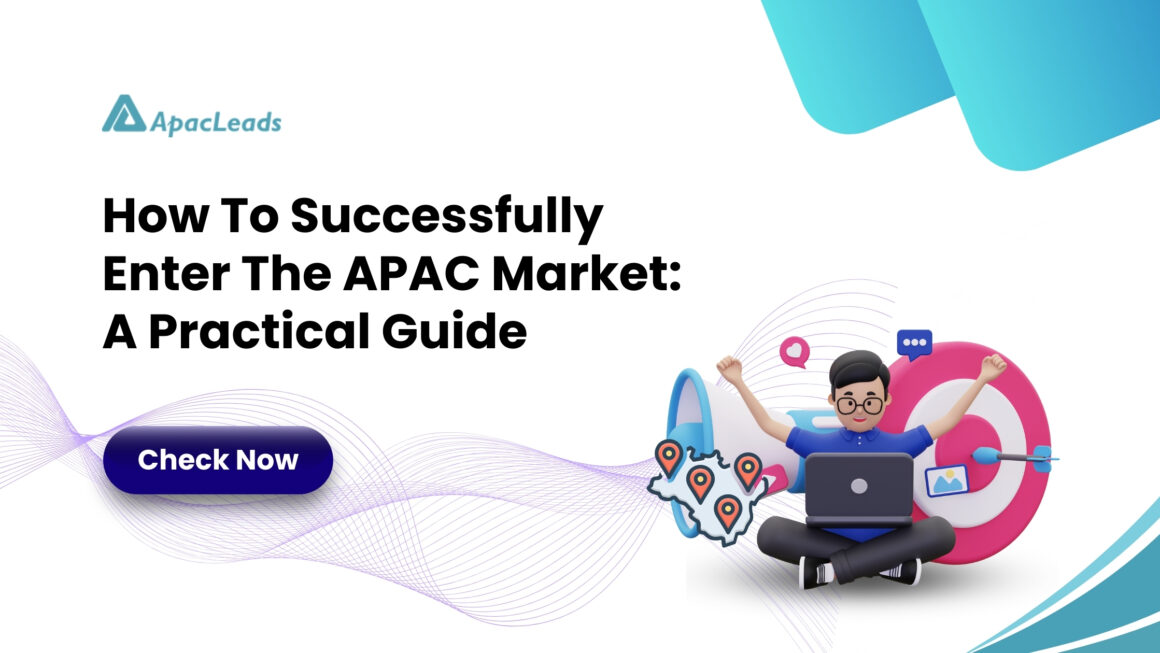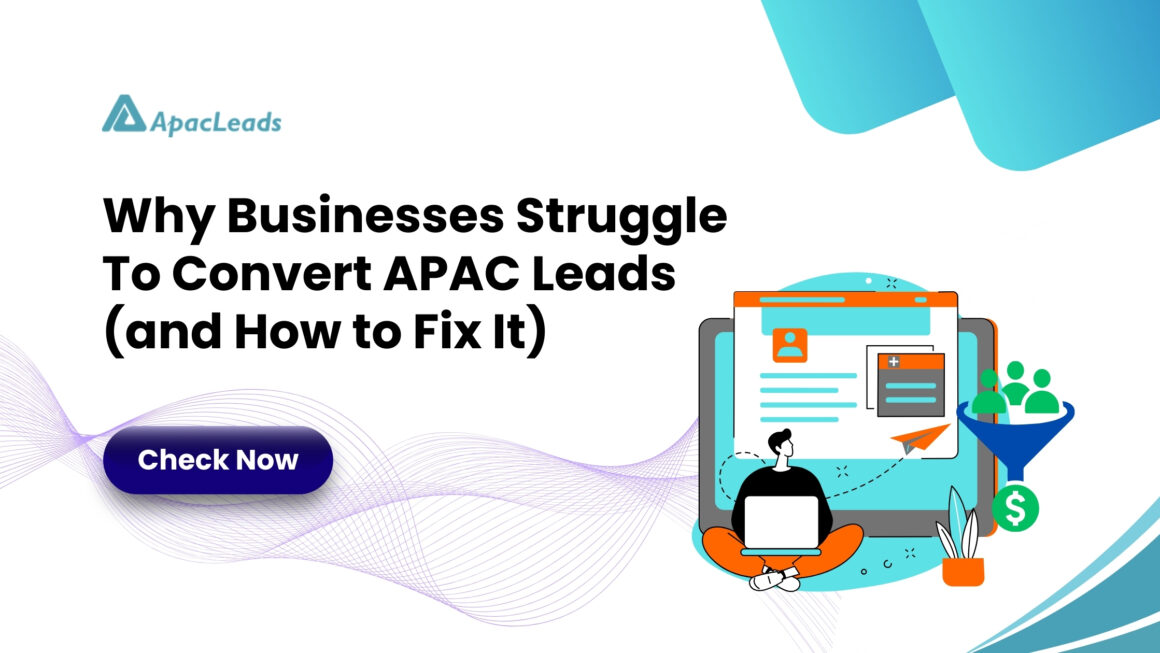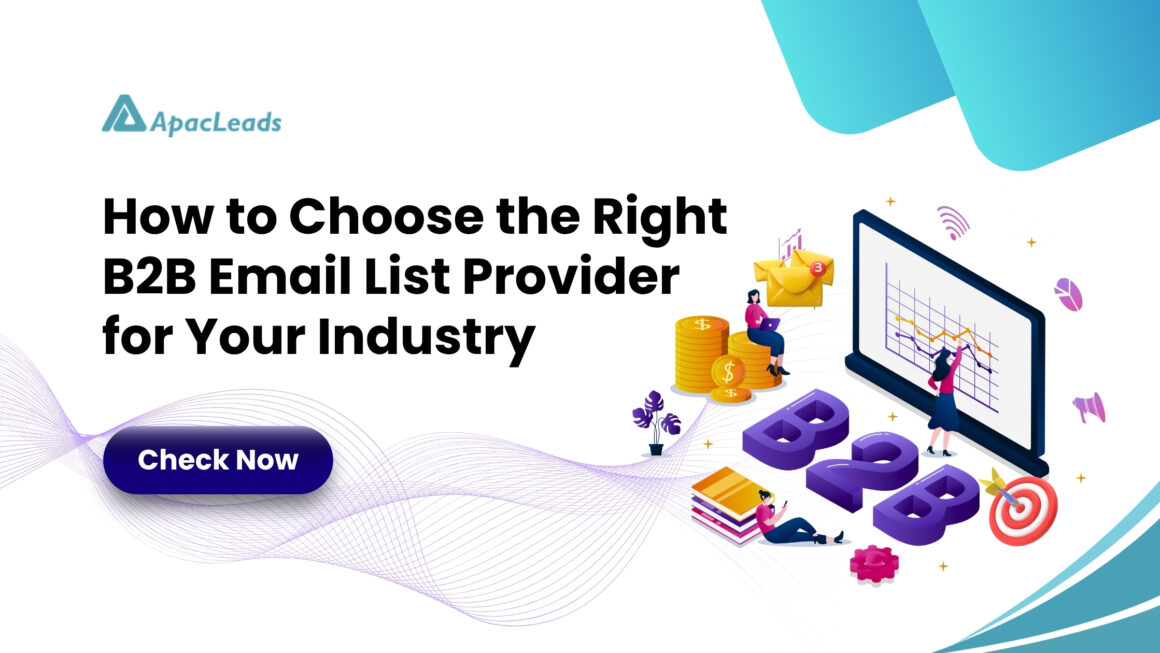Introduction
The Asia-Pacific (APAC) region is one of the fastest-growing economic powerhouses, set to shape global business growth in 2025 and beyond. Businesses looking to enter the APAC market can tap into over 60% of the world’s population, spanning advanced economies like Japan, Singapore, and Australia, as well as high-growth markets such as India, Vietnam, and Indonesia.
This diversity creates massive opportunities-but also complex challenges. Cultural differences, multiple languages, evolving digital ecosystems, and strict regulations mean businesses must approach APAC entry with precision.
This APAC business expansion guide breaks down proven APAC market entry strategies, showing you how to localize effectively, generate APAC B2B lead generation, and leverage GEO (Geographic strategies), LEO (Local Experience Optimization), and AEO (Answer Engine Optimization) for long-term success.
Understanding the APAC Market Landscape
APAC is not one unified market but a collection of more than 50 countries, each with unique business dynamics.
Key factors to consider:
- Economic diversity: Advanced economies (Japan, Singapore, Australia) vs. fast-growing ones (India, Indonesia, Vietnam).
- Cultural influence: Relationship-driven negotiations in Japan vs. digital-first buying in India and Southeast Asia.
- Language barriers: Content must adapt across Mandarin, Hindi, Bahasa, Japanese, and multiple dialects.
- Regulations: Taxes, tariffs, and data privacy laws vary across markets, demanding localized compliance.
Top opportunity markets in APAC:
- China – Strong GDP, booming e-commerce.
- India – Fastest-growing economy with huge digital adoption.
- Singapore – Gateway hub with advanced infrastructure.
- Australia – Mature economy with high purchasing power.
- Southeast Asia – Rising middle class, mobile-first consumers, and ASEAN-driven trade ease.
Entering Asia Pacific market tips: Always start with APAC market research tips for businesses. Understand consumer behavior, evaluate competitors, and review regulatory frameworks before entry.
Choosing the Right Market Entry Strategy
Your entry model will determine how much control, risk, and investment you take on.
Options include:
- Exporting – Low risk, fast entry, but limited local presence.
- Licensing – Access to local expertise but reduced brand control.
- Joint Ventures – Shared risk and regulatory support; ideal for complex markets like China.
- Direct Investment – High control but requires large capital and long-term commitment.
- E-commerce/Marketplaces – Rapid entry via platforms like Lazada, Shopee, and Amazon; great for digital-first regions.
GEO Tip: Match your strategy to the market. For example, joint ventures suit China due to regulation, while digital channels work best in Southeast Asia.
The Power of Localization (LEO in Action)
Success in APAC requires more than translation—it needs cultural and market alignment.
Key localization factors:
- Language adaptation: Tailor messaging in Mandarin, Hindi, Bahasa, Japanese, and others.
- Cultural relevance: Align campaigns with local festivals (Diwali, Chinese New Year, Ramadan).
- Pricing strategies: Adjust for local purchasing power and taxation.
- Customer experience: Optimize websites/apps for local devices, payment methods, and delivery systems.
LEO Tip: Use local insights and customer feedback loops to fine-tune campaigns continuously.
This is where APAC market localization strategies outperform simple translations—driving better engagement, loyalty, and conversion.
Building Sales & Marketing Strategies in APAC
- Hire local talent to bridge cultural and business gaps.
- Leverage verified B2B leads APAC databases to reach APAC C-level executives email list and decision-makers.
- Use multichannel campaigns in APAC—email, LinkedIn, WeChat, events, and phone outreach.
- Go mobile-first since mobile dominates internet usage in APAC.
- Integrate AI & automation for personalized engagement and scalable lead nurturing.
Effective email marketing in APAC region works best when combined with local compliance, personalization, and APAC B2B contact database segmentation.
This ensures businesses get APAC industry sales leads, whether in technology, healthcare, or finance.
How to Build APAC Digital Marketing Strategies
To succeed, adapt to regional platforms and buyer behaviors:
- Messaging Apps: WeChat (China), Line (Japan/Thailand), KakaoTalk (Korea).
- E-commerce Platforms: Lazada & Shopee dominate Southeast Asia.
- Influencer Marketing: Micro-influencers build trust and credibility.
- SEO Localization: Optimize for Baidu (China), Naver (Korea), and Google across markets.
- AI & Analytics: Use predictive insights for real-time campaign adjustments.
AEO Tip: Structure your content in Q&A style, making it easier for Google’s AI overviews and voice search to pull your content.
These APAC digital marketing tips are crucial for running multi-country APAC marketing campaigns.
Managing Supply Chain & Compliance
- Partner with local logistics experts for smooth delivery.
- Stay updated on trade agreements and data protection laws.
- Digitally integrate supply chain systems for transparency.
- Build contingency plans for geopolitical or environmental disruptions.
Navigating regulations for sales in Japan and China requires strict compliance. Failure can block market entry entirely.
Measuring Success & Scaling
Track your progress using KPIs such as:
- Market share and revenue growth.
- Lead-to-customer conversion rates.
- Customer satisfaction and retention.
- Adaptability to regulatory and consumer shifts.
Once proven, replicate successful strategies in new APAC markets while keeping localization in mind.
Benefits of Entering APAC Successfully
- Access to the world’s fastest-growing economies.
- Reduced global risk through regional diversification.
- Innovation by tapping into APAC’s digital transformation.
- Higher-quality APAC B2B sales leads via verified B2B leads APAC.
- Stronger customer loyalty through GEO + LEO-optimized strategies.
Conclusion
The APAC market is full of opportunities, but winning requires APAC business growth tactics, smart entry strategies, and data-driven marketing. By applying LEO for local resonance, GEO for country-specific targeting, and AEO for AI-driven visibility, businesses can unlock sustainable growth in this dynamic region.
Ready to enter the APAC market successfully? Success starts with trusted data, localized strategy, and precision marketing.
Get access to verified APAC B2B Email List, including APAC healthcare email list for marketers, APAC lead generation for technology companies, and APAC C-level executives email list. Build stronger pipelines with the best B2B list providers in Australia, India, Singapore, and beyond.
Contact us today for a customized demo and growth plan.
Frequently Asked Questions (FAQ’s)
India, China, Singapore, Australia, and Vietnam are top markets, each offering high growth but with different entry requirements.
Because APAC market localization strategies adapt content, pricing, and campaigns to cultural and market needs—building stronger connections than word-for-word translation.
Complex regulations, supply chain barriers, and cultural differences. These can be solved with APAC market challenges and solutions such as partnerships, compliance planning, and GEO (Geographic strategies) / LEO (Local Experience Optimization) strategies.
AI tools improve targeting, personalize engagement, and optimize campaigns in real-time—leading to best practices for APAC B2B sales lead nurturing and faster pipelines.



